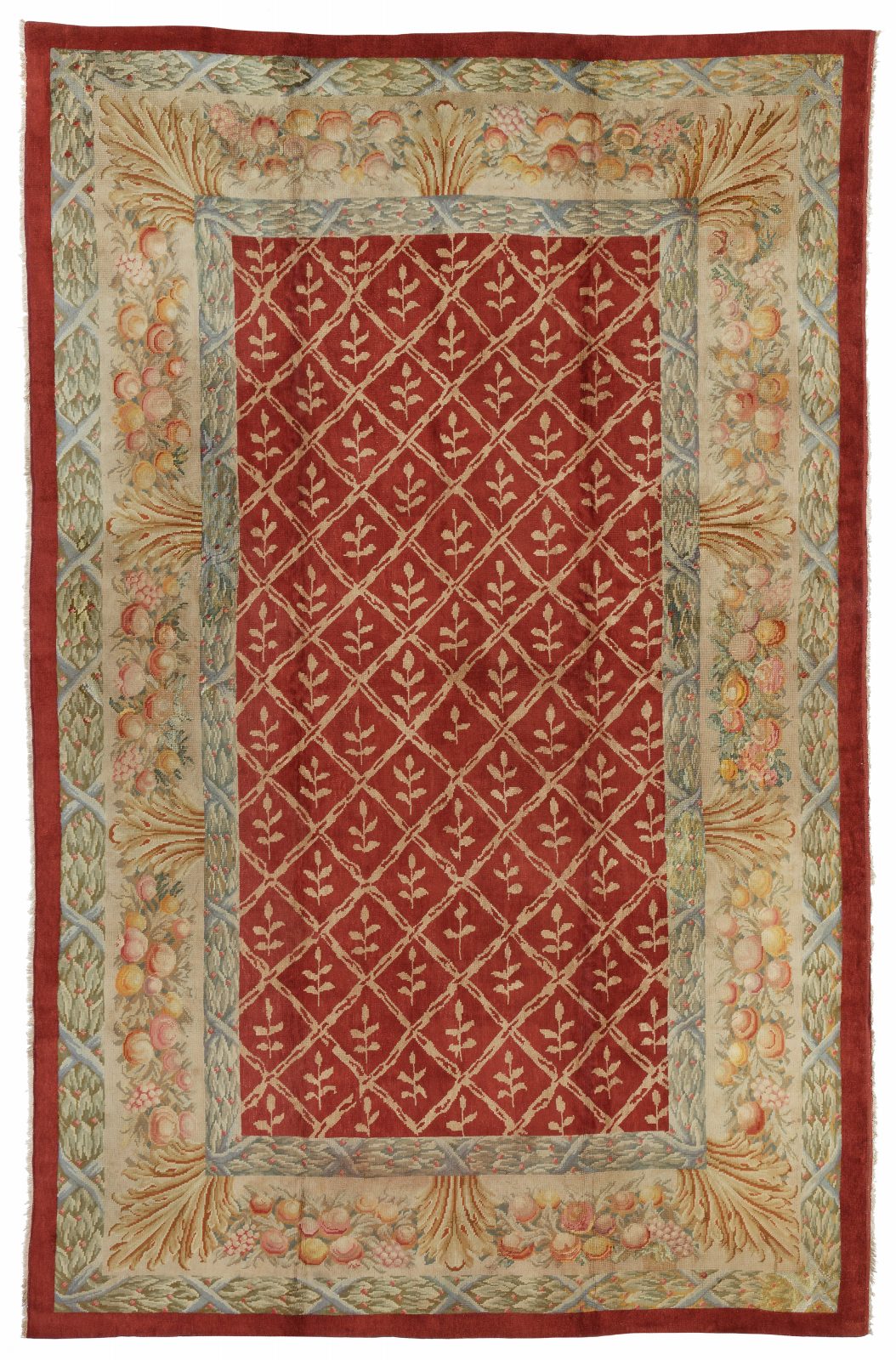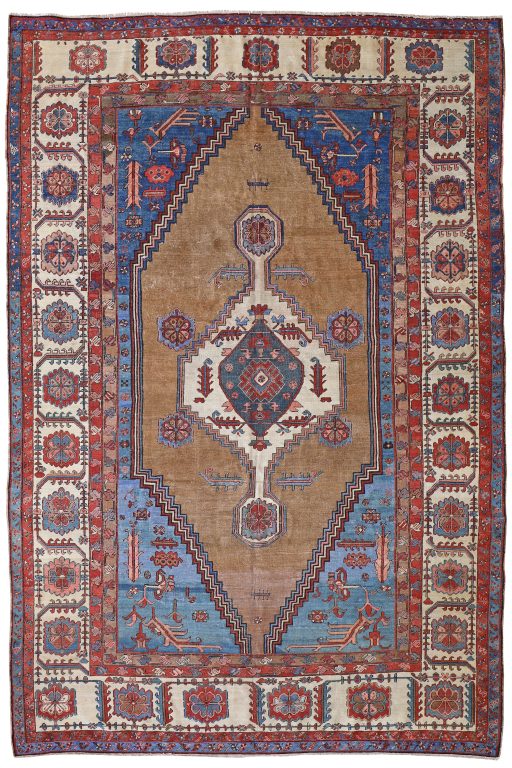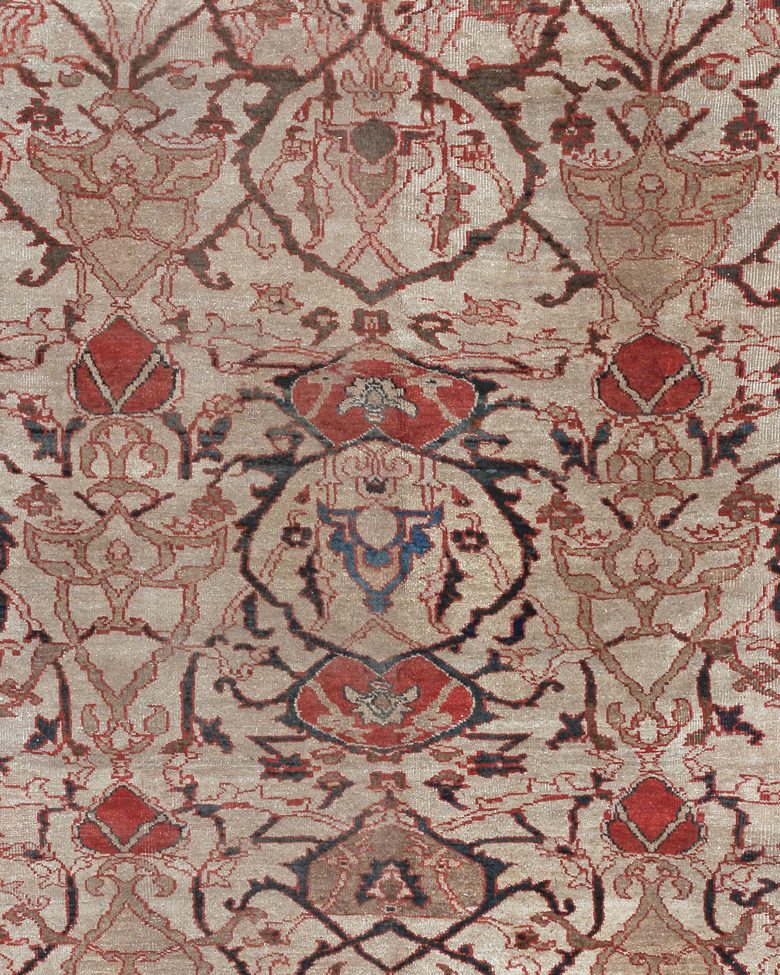The weavers, who were mostly women, hadn’t made carpets before but many of them had worked in lace-making and embroidery. The local sheep farmers, spinners and dyers got in on the act. The carpets were handwoven in the same way as Turkish and Persian carpets. They couldn’t afford the carpets that they made but the enterprise was a big source of employment. The Killybegs factory was followed by others at Kilcar, Annagry, and Crolly. By 1906, the four employed 600 between them.
Arts and Crafts Donegal carpet
Description
A beautiful antique Arts and Crafts Donegal carpet with a wonderful all over subtle lattice design and an array of fruit in the large scale border. Reminiscent of William Morris designs, this all over open pattern of lattice work is subtle and elegant. In very good condition with minimal areas of preservation. These antique Donegal carpets are sought after by collectors and decorators alike.
The first Donegal carpets were made in the late 1890s when the Scottish industrialist, Alexander Morton, opened a factory in Killybegs. Morton was head of a textile manufacturing firm in Ayrshire. Although his factories already made machine-woven rugs, he wanted to make handmade carpets like those popular from Turkey and Persia. A chance meeting with a member of Ireland’s Congested Districts Board pointed him towards Donegal. The county had two things to offer: a ready supply of willing workers and an almost infinite number of sheep.
Later designs used the stylised floral patterns of the British Arts and Crafts movement. Those by the architect and designer Charles Voysey were especially popular. The company also made a number of carpets in the Celtic Revival style. Donegal carpets were purchased for Buckingham Palace, Windsor Castle, and the White House in Washington. These early carpets are very valuable indeed.
Please request a home visit to choose a suitable time and day to view this antique Donegal carpet in-situ.






















